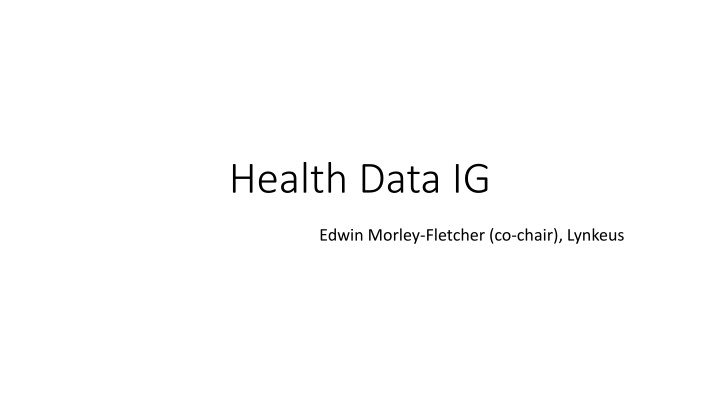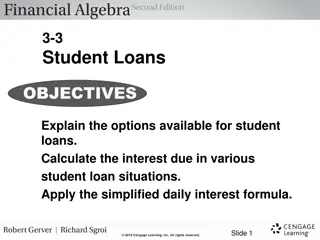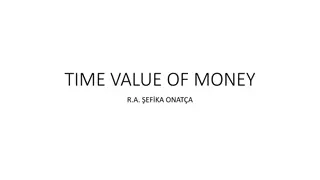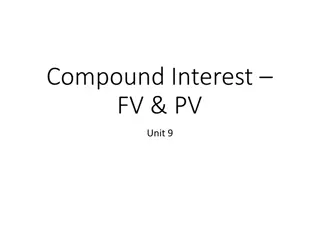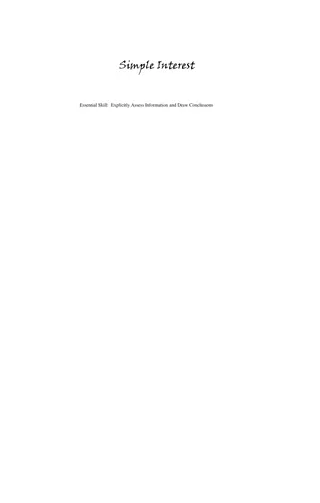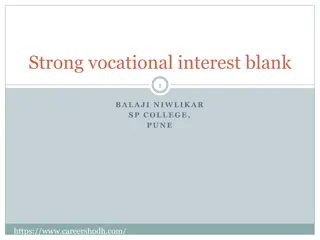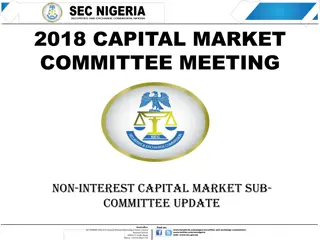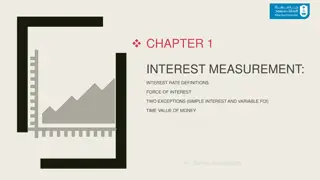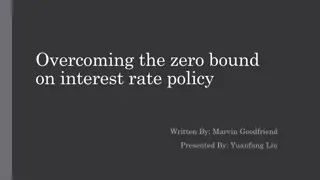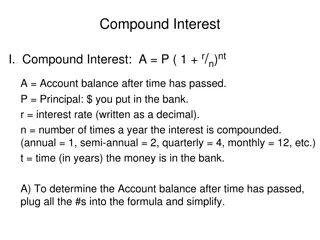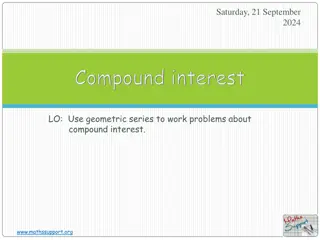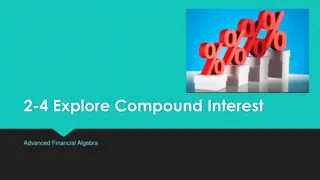Health Data Interest Group Overview
Health Data Interest Group, co-chaired by Edwin Morley-Fletcher and Lynkeus, focuses on data access, protection, sharing best practices, and developing models for consent in healthcare. The group aims to facilitate data-based healthcare for personalized medicine, patient-specific simulation, and predictive analytics. Targeted participation areas include clinicians, biomedical researchers, healthcare data analytics experts, policy-makers, and more. Founded in 2016, the group works towards addressing challenges and interdisciplinary research needs in the field. Learn about Ronald Coase, a Nobel Laureate in Economics known for his contributions to transaction costs theory.
Download Presentation

Please find below an Image/Link to download the presentation.
The content on the website is provided AS IS for your information and personal use only. It may not be sold, licensed, or shared on other websites without obtaining consent from the author.If you encounter any issues during the download, it is possible that the publisher has removed the file from their server.
You are allowed to download the files provided on this website for personal or commercial use, subject to the condition that they are used lawfully. All files are the property of their respective owners.
The content on the website is provided AS IS for your information and personal use only. It may not be sold, licensed, or shared on other websites without obtaining consent from the author.
E N D
Presentation Transcript
Health Data IG Edwin Morley-Fletcher (co-chair), Lynkeus
Brief History BoFs @RDA P6 in Paris and @RDA P7 in Tokyo Health Data Interest Group established @RDA P8 in Denver (September 2016) # over 100 members Second meeting at @RDA P9 with focus on Data Protection (GDPR) and Health Data Mapping https://docs.google.com/spreadsheets/d/1WUGU1McZH3jo5x7g2FCMsvPdF5DKUHKL6AqJWBUamB0/edit#gid=1612672872 BOF on Blockchain for Health @RDA P9 in Barcelona (April 2017), to be held again @RDA P10, in view of establishing a dedicated Working Group. Quarterly confcalls
User scenarios/focus areas Data access and protection sharing best practice on pseudonymisation and anonymisation developing models for consent that protect patients while enabling research providing a forum for discussing, explaining and responding to data protection regulation secure opening up of data to facilitate research Data-based healthcare for personalised medicine disease signatures identification stratification of patient groups patient-specific simulation and prediction Data literacy in Health care providing materials for education of healthcare professionals on use and misuse of data Patient data repositories/patient-centric data gathering systems In-silico drug development and clinical trials representing interests of the data-based healthcare community to policy makers identifying and discussing related challenges, interdisciplinary research needs and potential roadmaps.
Target participation areas Clinicians (to use data technology to improve practice) Biomedical researchers (using analytical techniques) Healthcare Data Analytics (with data mining, machine learning, physiological modelling and image processing expertise) HPC and distributed computing experts Policy-makers for Healthcare Health bioinformatics legal experts Healthcare administrators - Health Maintenance Orgs Pharmaceutical industry researchers and manufacturers Medical equipment researchers and manufacturers In silico modelling, testing and clinical trial experts Blockchain Applications in Health
Who is Ronald Coase ? Who is Ronald Coase ? Ronald Coase (1910-2013): Nobel Laureate for Economics on 1991 More than 50 years after his disruptive The Nature of the Firm (1937), and 30 years after The Problem of Social Costs (1960). It is now possible to reverse Ronald Coase s Transaction Costs. What Internet did to transaction costs regarding information, blockchain can do regarding trust.
Assumptions and Expectations Assumptions and Expectations Public and private initiatives, both in Europe and in the US, are currently addressing the potential of applying the blockchain approach to health data. This is related to great general expectations ( what Internet did to transaction costs regarding information, blockchain can do regarding trust ) and to the assumption that what is needed for health data is a Distributed Empowerment system, providing secure access from anywhere on any device.
Blockchain Ledger Blockchain Ledger A Distributed Empowerment system having the Blockchain ledger as secure, non-editable record, where all transactions are confirmed by the network as entries forming blocks of transactions, and the whole network monitors the legitimacy of each transaction, guaranteeing distributed control.
Smart Contracts Smart Contracts The blockchain is expected to be based on portfolios of Smart Contracts. Smart Contracts are the executable pieces of code, stored on the blockchain for future execution. These bind people and transactions to specific actions and outcomes and require no further direct human involvement after the smart contract has been made a part of the distributed ledger (which is what makes these contracts "smart" or self-enacting).
MHMD is developing new mechanisms of trust and of direct, value-based relationships between people, hospitals, research centres, and businesses MHMD is going to be the first open biomedical information network centred on the connection between organisations and the individual.
MHMD GOALS MHMD GOALS Profile and classify sensitive data based on their informational and economic value Assess the most suitable and robust de-identification and encryption technologies needed to secure different types of information Allow having advanced analytics running on anonymised or pseudonymised data Evaluate the overall security of MHMD multi-modular architecture by testing it through dedicated self-hacking simulations and public hacking challenges Analyse users behavioural patterns alongside ethical and cultural orientations, to identify hidden dynamics in the interactions between humans and complex information services Improve the design of data-driven platforms Foster the development of an information marketplace, in which both individuals and clinical institutions will be able to exert control on their health data and leverage their value
MHMD Participants MHMD Participants 5 SMEs: Lynkeus Digi.Me (UK), HW Communications (UK), Gn bila (France), SBA Research (Austria) 4 Research centres and Academia: Athena Research (Greece), Consiglio Nazionale delle Ricerche (Italy), HES-SO (Switzerland), Universitatea Transilvania din Brasov (Romania) 1 Legal consultancy: P & A (Italy) 1 Industry: SIEMENS Healthcare (Germany) (Italy) [Coordinator], 4 Clinical partners: Charit Hospital (Berlin), Ospedale Pediatrico Bambino Ges (Rome), Queen Mary University London), University College London.
Strategically Relying on Four Leading Hospitals Strategically Relying on Four Leading Hospitals Following the example of routine data inflow by the OPBG PCDR, and the interoperability system established in Cardioproof and MD-Paedigree Taking into account the less restricted data processing allowed by the GDPR when it is aimed at scientific research, and the proviso that the data protection legislation does not apply to duly anonymised data Guaranteeing that all health and personal data will: Be duly anonymised before been uploaded on MHMD Infostructure Be processed, should the use of partial anonymisation techniques be indicated for the intended use of data, on the ground of a Dynamic Consent provided by the data subjects. Exploring different open data implementation approaches Evaluating, to the extent permitted by national and European regulations, solutions providing some concrete acknowledgment of data value
Institutional Data providers requirements Institutional Data providers requirements All four hospitals commit to: Acquire a server to host the local data catalogue and contribute to blockchain transactions Have their research data indexed using DOIs Integrate the server in their Healthcare Information System (HIS) (thus allowing later production) Consent to be consulted on future cohort requests Ensure Veracity, Validity & Integrity of their data Only make pseudonymous data available Handle the responsibility of patient identity mapping with local anonymous data
Two layers of data flow Two layers of data flow A semi-automated data profiling and cleaning engine that: o Ensures and assesses data quality o Guarantees the most appropriate de-identification or encryption mechanism, according to each type of data or modality A privacy preserving and security layer that combines: o A privacy preserving data publishing engine (providing anonymisation tools) o A privacy preserving complex data flow execution engine (i.e., differential privacy, SMPC, homomorphic encryption) The joint goal is to allow: o Classifying medical data and correspondent security and privacy provisions in each category o Assessing relevance, sensitivity, risk for the individual and practical value o Selecting the most appropriate security and privacy preserving technique in each case
INDIVIDUAL MHMD User Entitlements (1) INDIVIDUAL MHMD User Entitlements (1) Aggregate personal data from disparate sources: Social media accounts, clinical data repositories, personal drives, wearable devices, etc., in a single, user-owned account (PDA). Assign data access rights Within an efficient workflow, based on stakeholders permissions and addressing simple questions: o Type of data requested o Intended use o Data that will be retained o Data that will be shared with 3rdparties and intended use o Implementation of the Right to be forgotten.
INDIVIDUAL MHMD User Entitlements (2) INDIVIDUAL MHMD User Entitlements (2) Stay informed of, and enquiry on, relevant data transactions after access has been granted Be able to revoke data access rights, or extend them Be able to receive requests from stakeholders for data access permissions. Requests may also include incentives offered by stakeholders in exchange for data Define post-mortem usage or donation of personal data
Blockchain: no recourse to Trusted Third Party Blockchain: no recourse to Trusted Third Party Applying the blockchain approach to health data guarantees secure access from anywhere on any device The Blockchain ledger is the secure, non-editable record where: o All transactions are confirmed by the network as entries forming blocks of transactions o The whole network monitors the legitimacy of each transaction, guaranteeing a distributed control system Each stakeholder can enact anonymous transactions through the ledger: o Employing public key encryption for identifying owners in the ledger, recording one half of the public key pair o Only the person or istitution holding the corresponding private key can decide what happens next to their data Each stakeholder is equipped with a wallet containing: o An encrypted identifier o His/her Dynamic Consent o His/her data access policy file
DOI System: Handle.net DOI System: Handle.net The Handle System is a comprehensive system chosen for assigning, managing, and resolving persistent identifiers for digital objects and other resources on the Internet The protocols enable a distributed computer system to store identifiers of digital resources and resolve those identifiers into the information necessary to locate and access the resources The handle.net 8.1 software include : o a RESTful JSON-based HTTP API o a browser-based admin client o an extension framework allowing Java Servlet apps o authentication using handle identities without specific indexes o multi-primary replication o Security improvements
Applied Analytics: Probabilistic Modeling for statistical simulation Modelling Dependency Analysis Inference
Applied Applied Analytics: Analytics: DeepReasoner Multi-modal patient modelling in MD-Paedigree DeepReasoner by Siemens by Siemens Create patient representation combining information from multiple sources Circulation Clinical information Cardiac function Microbiome Fat information Strains Final Conference
